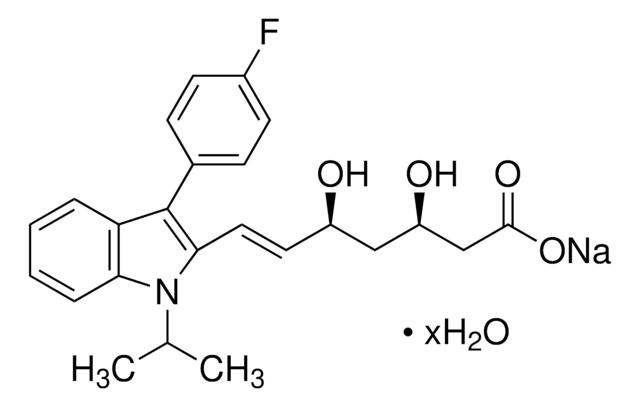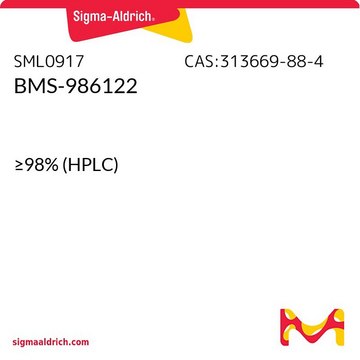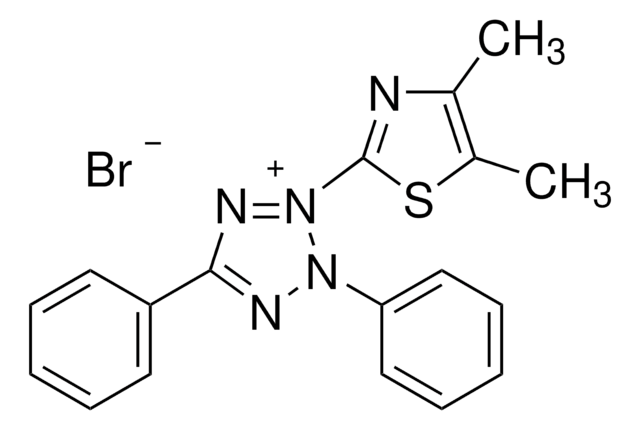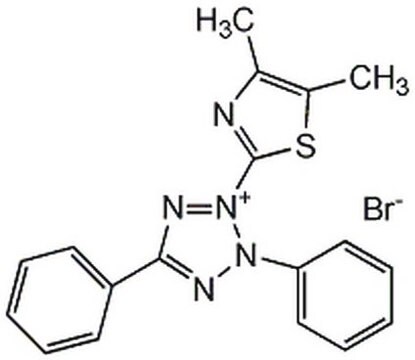Kluczowe dokumenty
L9919
LY2033298
≥98% (HPLC)
Synonim(y):
3-Amino-5-chloro-N-cyclopropyl-6-methoxy-4-methyl-thieno[2,3-b]pyridine-2-carboxamide
About This Item
Polecane produkty
Poziom jakości
Próba
≥98% (HPLC)
Formularz
solid
warunki przechowywania
desiccated
kolor
off-white to tan
rozpuszczalność
DMSO: >20 mg/mL
inicjator
Eli Lilly
temp. przechowywania
−20°C
ciąg SMILES
COc1nc2sc(C(=O)NC3CC3)c(N)c2c(C)c1Cl
InChI
1S/C13H14ClN3O2S/c1-5-7-9(15)10(11(18)16-6-3-4-6)20-13(7)17-12(19-2)8(5)14/h6H,3-4,15H2,1-2H3,(H,16,18)
Klucz InChI
CTEGQKDJTBWFHW-UHFFFAOYSA-N
Działania biochem./fizjol.
Cechy i korzyści
Hasło ostrzegawcze
Danger
Zwroty wskazujące rodzaj zagrożenia
Zwroty wskazujące środki ostrożności
Klasyfikacja zagrożeń
Resp. Sens. 1
Kod klasy składowania
11 - Combustible Solids
Klasa zagrożenia wodnego (WGK)
WGK 3
Temperatura zapłonu (°F)
Not applicable
Temperatura zapłonu (°C)
Not applicable
Wybierz jedną z najnowszych wersji:
Certyfikaty analizy (CoA)
Nie widzisz odpowiedniej wersji?
Jeśli potrzebujesz konkretnej wersji, możesz wyszukać konkretny certyfikat według numeru partii lub serii.
Masz już ten produkt?
Dokumenty związane z niedawno zakupionymi produktami zostały zamieszczone w Bibliotece dokumentów.
Nasz zespół naukowców ma doświadczenie we wszystkich obszarach badań, w tym w naukach przyrodniczych, materiałoznawstwie, syntezie chemicznej, chromatografii, analityce i wielu innych dziedzinach.
Skontaktuj się z zespołem ds. pomocy technicznej









